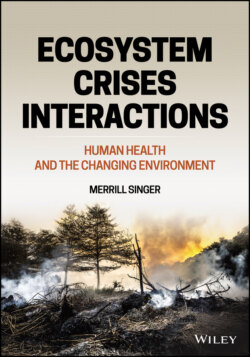Читать книгу Ecosystem Crises Interactions - Merrill Singer - Страница 40
2.3.2.2 The species quandary
ОглавлениеIt bears noting that despite its centrality to biology and all other disciplines concerned with living and extinct organisms, the species concept remains a difficult issue. There is no fully agreed upon definition of its precise meaning and no universally shared understanding of its parameters, a dilemma known in biology as “the species problem” (Hey 2006; Mayr 1957; Wheeler & Meier 2000). A primary source of this dilemma is biological diversity. A definition of species that is useful for categorizing similarities and differences among organisms that reproduce sexually, for example, is not useful for organisms like bacteria that reproduce asexually. To Mayr (1942), a leading evolutionary biologist of the 20th century, a species is composed of organisms that can reproduce fertile offspring with one another and that are reproductively isolated from other populations. Many researchers, but far from all (e.g., Wheeler & Meier 2000), find Mayr’s (1942) definition to be the most useful for their efforts to grapple with the biodiversity of organisms, past and present. However, as stressed in this book, environments are changing, and as a consequence, species are moving. The geographic barriers that once divided identified species and minimized their chances of interbreeding are collapsing. Across the globe, new hybrid species are being documented among toads, sharks, butterflies, bears, and trout, the offspring of interbreeding of species newly brought together by climate change. Warmer temperatures have facilitated grizzly bear and polar bear encounters, leading to hybrids called either pizzlys or grolar bears. Among birds, a similar development has occurred among golden‐winged warblers and blue‐winged warblers. One unexpected consequence of human impact on ecosystems is thus changes in planetary speciation.
